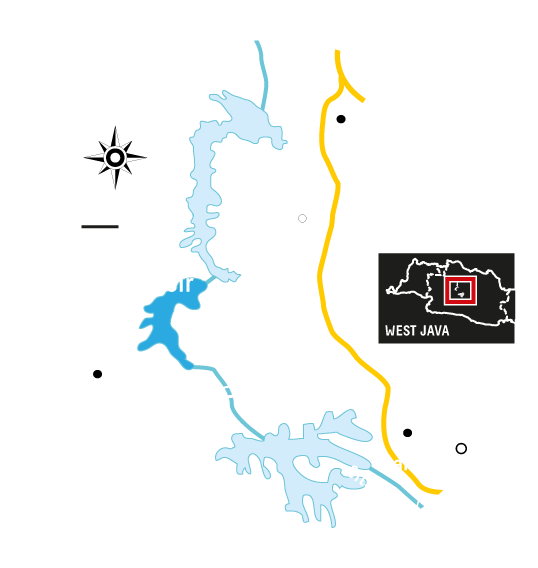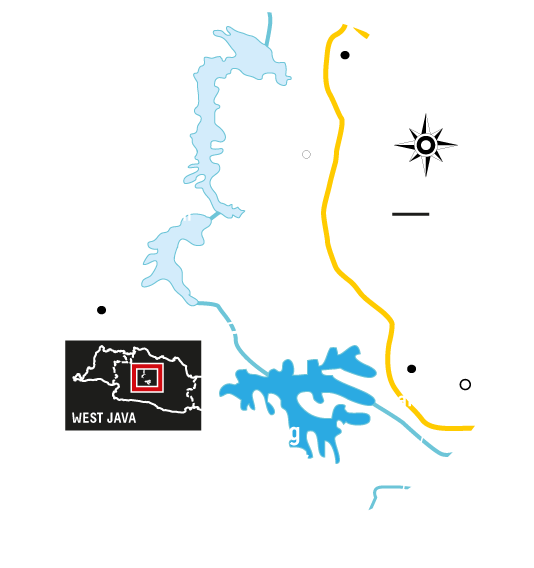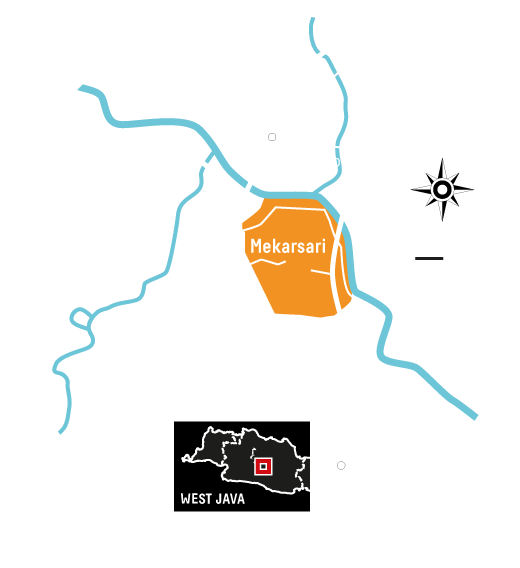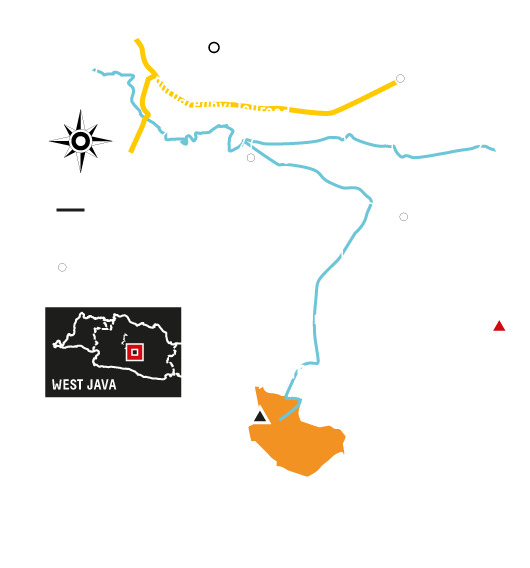

Change your device to Potrait Mode

on

off
Evolution of Citarum River
Having flowed through “Bumi Pasundan” (a nickname for West Java) for thousands of years. Citarum has evolved from a blessing for locals to a source of disaster. Can it be transformed into a blessing again?

The Cirata hydropower plant, with total power of 8 x 126 megawatt, was inaugurated by President Soeharto together with the Mrica and Sengguruh hydropower plants in Central Java on March 25, 1989. At the time, the total capacity of power plants across Indonesia was only 8,000 MW.
Construction of the Jatiluhur Dam began after the government decided to add a dam to the Citarum River in 1957. The construction project was completed 10 years late. President Soeharto inaugurated the dam in August 1967. At that point, agriculture fields belonging to thousands of residents of Jatiluhur district vanished.
Some 8,300 hectares of agriculture field in the area was sacrificed to create an artificial lake that contains three billion cubic-meter of water. Since then, the Jatiluhur dam has proven to be a boon for farmers in the Citarum’s downstream and a reliable source of electricity for people in Bandung and Jakarta.

The Saguling hydropower plant with a total power of 700 megawatt, was inaugurated by President Soeharto on July 24, 1986. “We need to think of ways to prevent waste and erosion from local fields from disrupting the dam,” President Soeharto said.

Flooding in Mekarsari, Baleendah, Bandung regency, is an annual occurrence. However, in late 2018, the flooding in Mekarsari was estimated to have been reduced due to the operation of a retention pool in Cieunteung, Baleendah district.
(Kompas, December 30, 2017)

From Tarumajaya village in Kertasari district, Bandung regency, West Java, Citarum’s water flows hundreds of kilometers away until it reaches Java Sea. From Tarumajaya, Citarum’s cleanliness must be preserved. We should not dream about a Redolent Citarum when its upstream region is heavily damaged.
“There should not be any fish cultivation in CItarum as the water is poisoned by toxic and dangerous chemical substances,” Indonesian Aquaculture Society’s Muhamad Husen said in Bandung on Friday (5/1/2018). However, the fact remains that thousands of fishes from Jatiluhur and Cirata dam are sold every day in Jakarta and West Java.
The two dams are now filled with floating fish cages. Cirata dam should only contain 12,000 floating fish cages but 70,000 such cages were found there on Saturday (6/1). Meanwhile, Jatiluhur should only contain 6,000 floating fish cages but now has 24,000 such cages. Is there any solution for this uncontrolled growth?
“It is easy to fight factories and industry that pour their waste to Citarum. Just tell their bosses, executives or shareholders to take a bath on the river that collects their factory waste. They will learn their lesson, I’m sure,” said Sam Bimbo, laughing. (Kompas, Wednesday, 26 February 2014).
(Kompas, February 23, 2018)
Credits
Writer: Haryo Damardono | Language Editor: Lucia Dwi Puspita Sari | Reporters: Her Suganda, Cornelius Helmy Herlambang, Mukhamad Helmy | Photographers: Agus Susanto, Bambang Sukartiono, Benediktus Krisna Yogatama, Dedi Muhtadi, Fx Puniman, Hamzirwan, Haris Firdaus, Harry Susilo, Her Suganda, Kartono Ryadi, Lucky Pransiska, Markus Duan Allo, Mukhamad Kurniawan, Nugroho F Yudho, Rony Ariyanto Nugroho, Totok Poerwanto | Infographics: Gunawan Kartapranata | Photo Adjuster: Toto Sihono | Desainer & Pengembang: Rafni Amanda, Deny Ramanda, Vandi Vicario | Produser: Haryo Damardono, Septa Inigopatria, Prasetyo Eko Prihananto